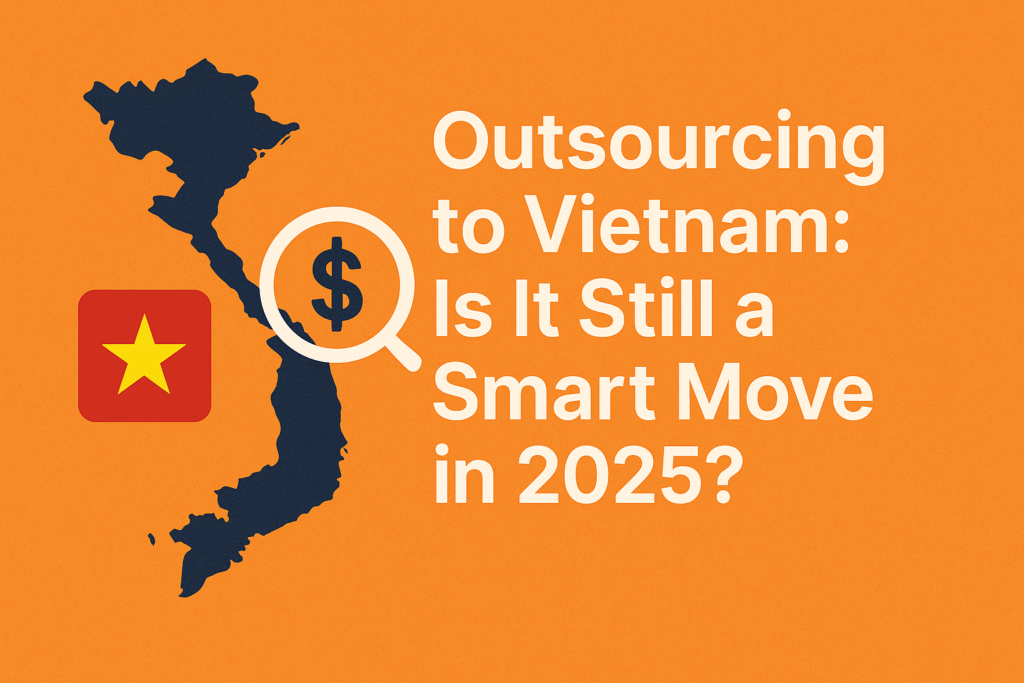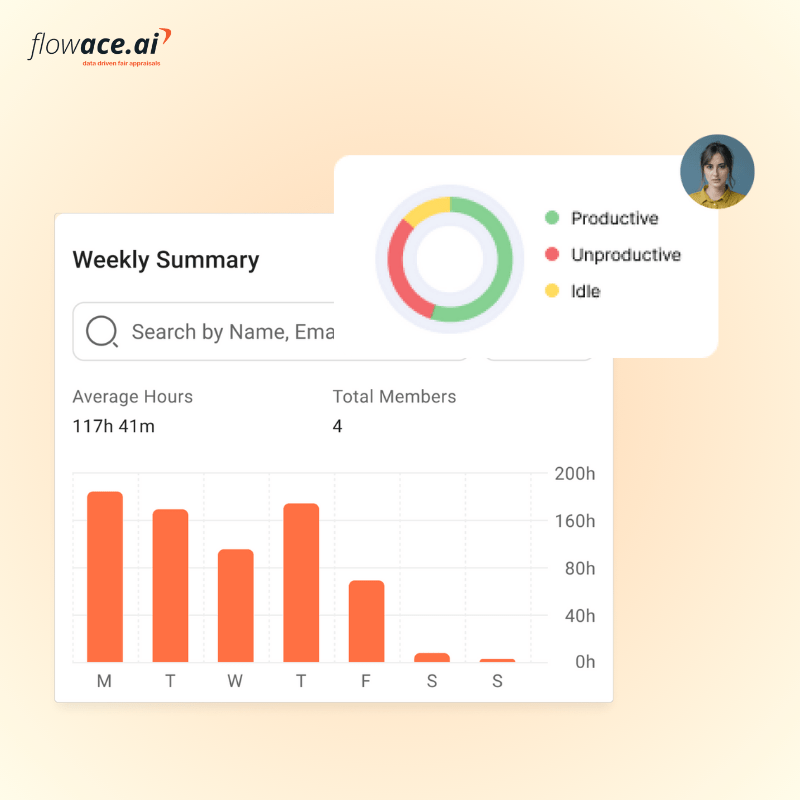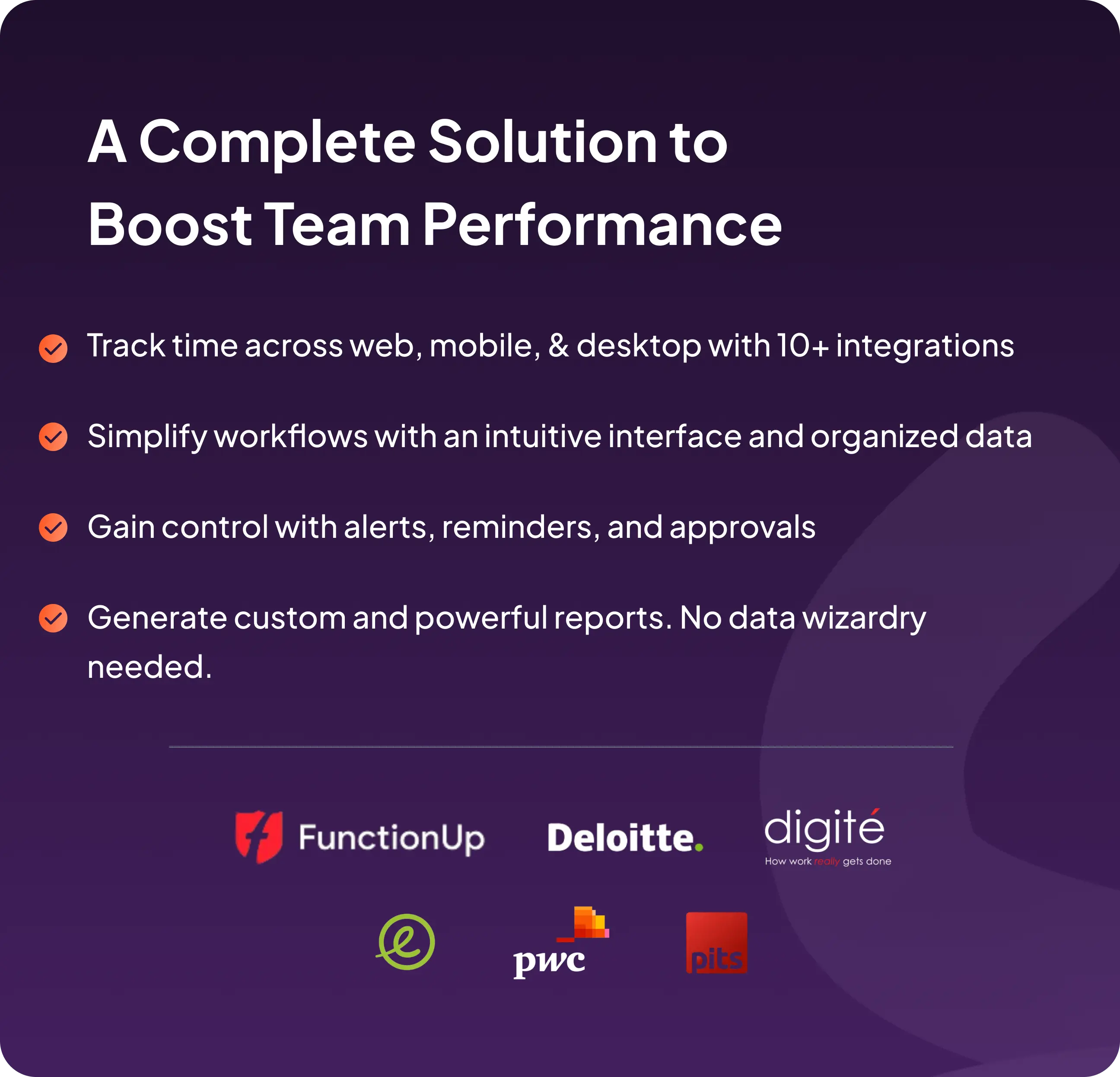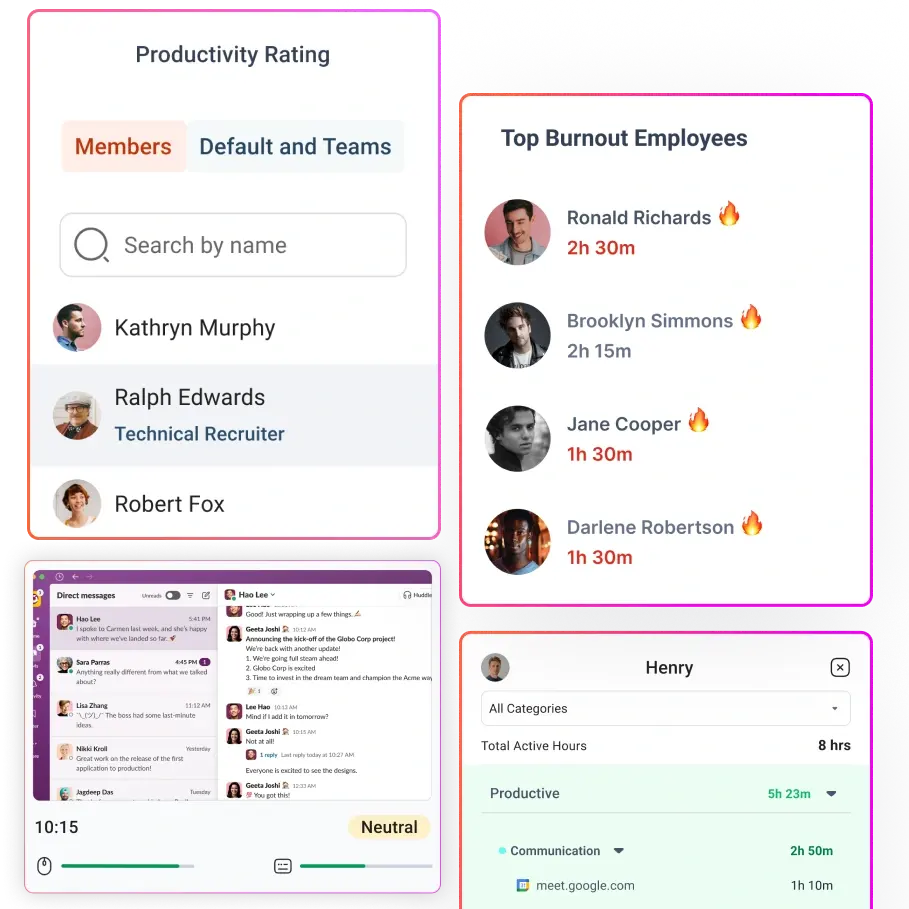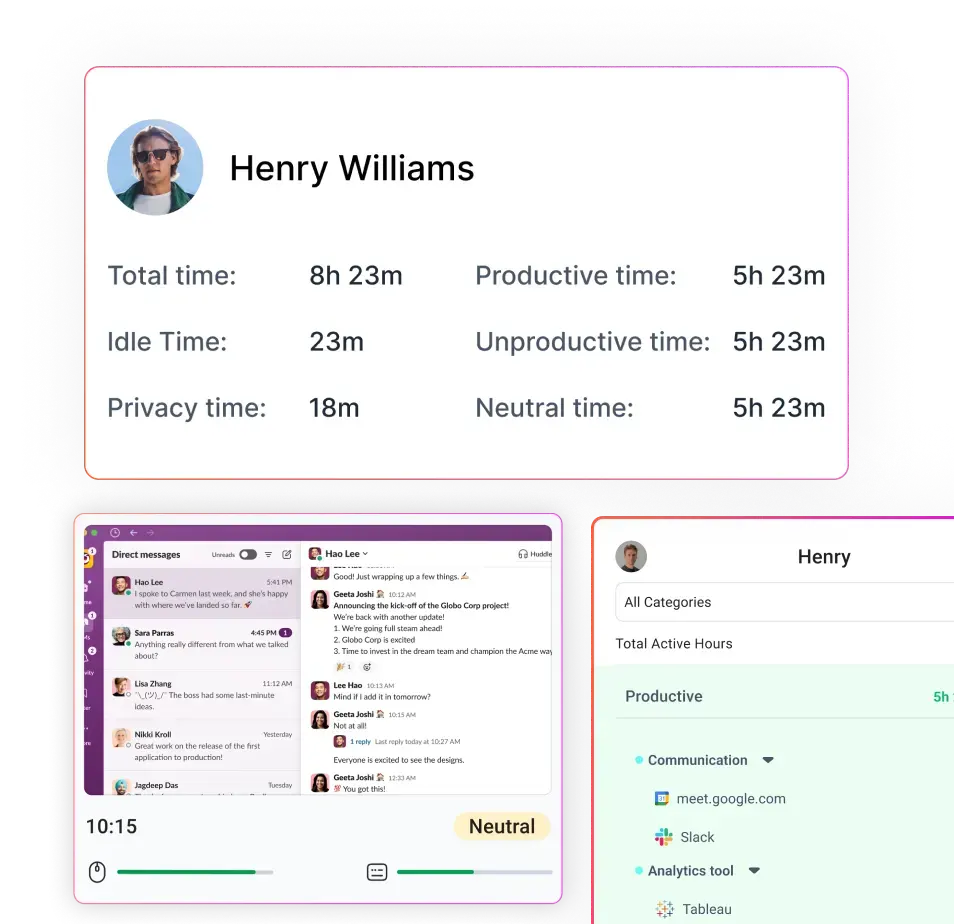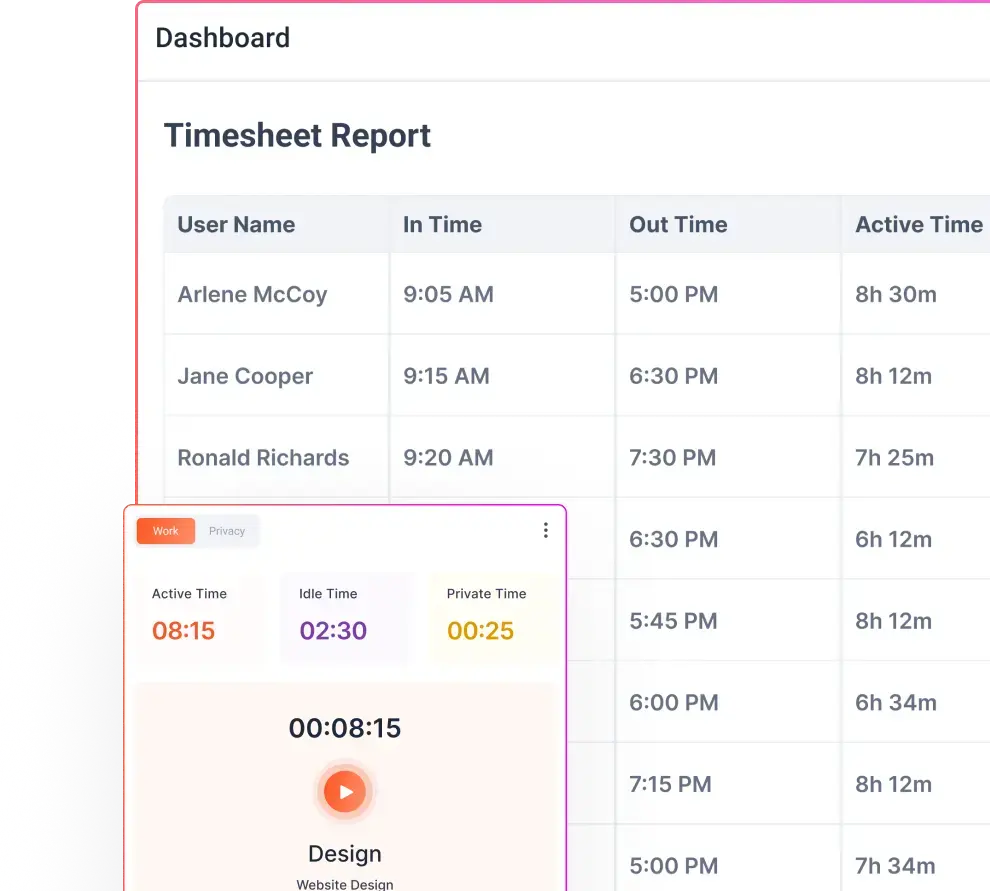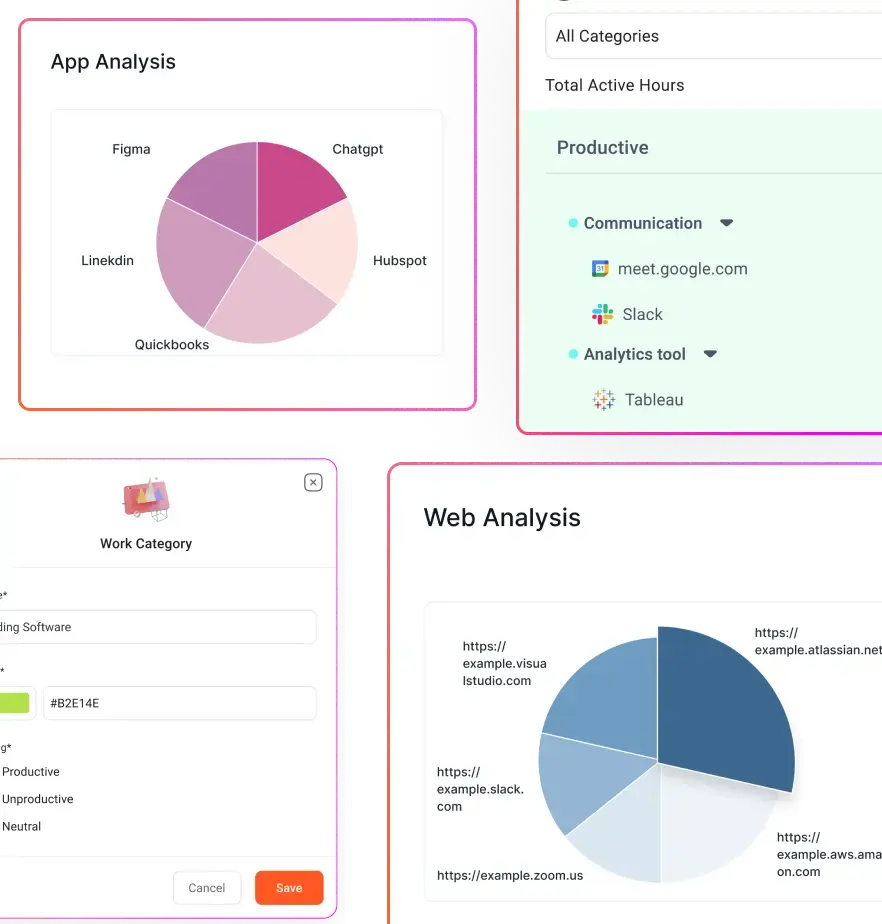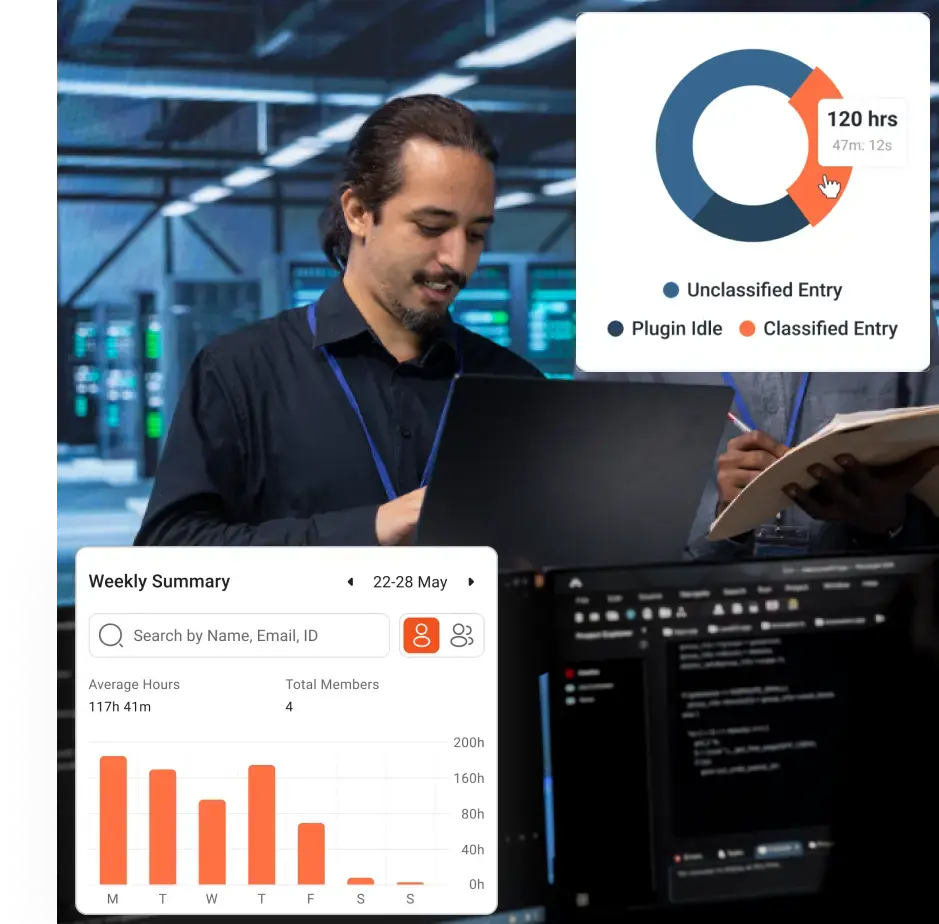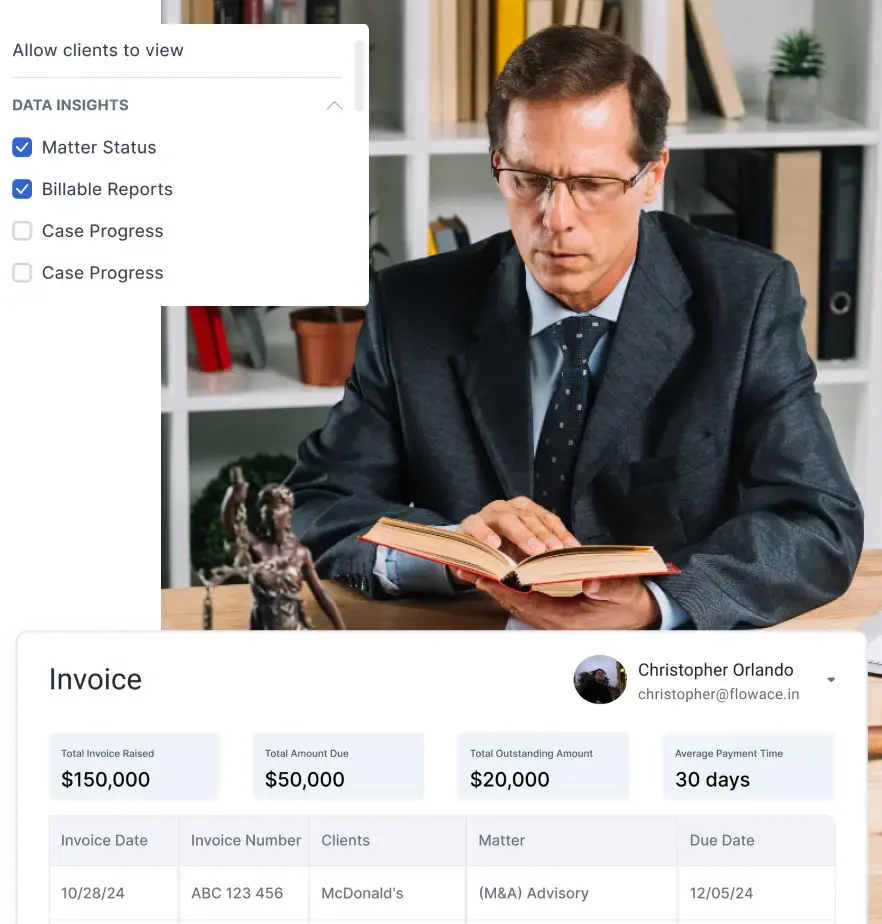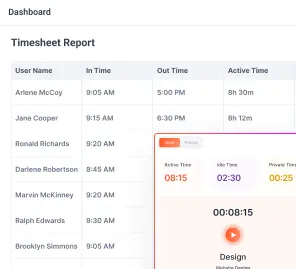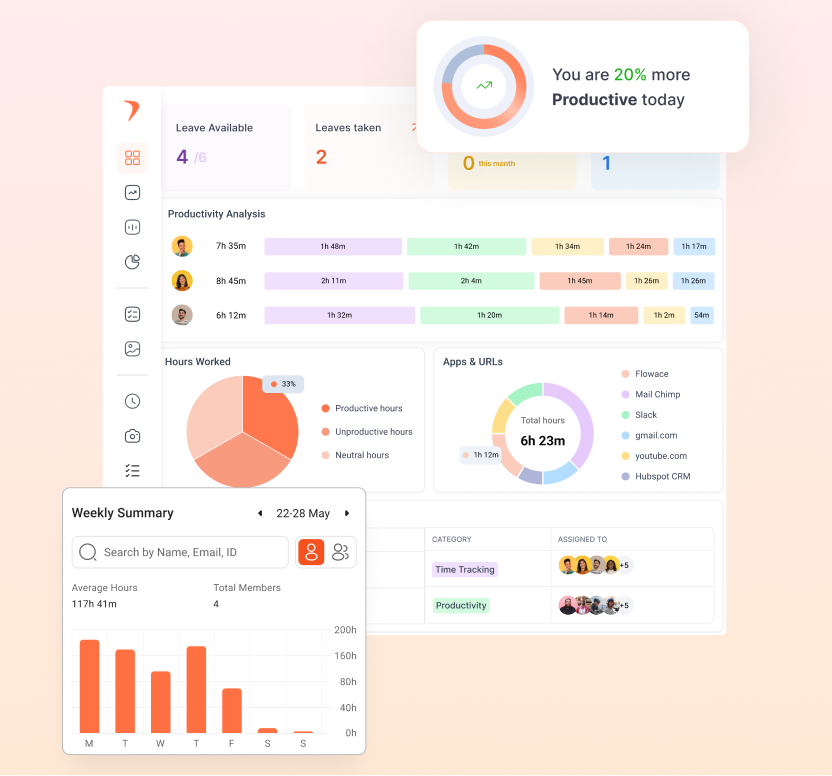Key Takeaways:
-
Vietnam Offers High ROI Through Cost and Quality: You get top-tier tech talent at rates 15–30% lower than India and over 90% cheaper than the U.S., without compromising quality.
-
Skilled, Loyal, and Culturally Compatible Workforce: Vietnam produces 55,000+ IT grads annually and has over 560,000 developers with strong retention and alignment with Western work styles.
-
Unmanaged Outsourcing Risks Can Hurt ROI: Without structure, teams can lose 2,000–4,000 hours a year due to idle time, miscommunication, or lack of oversight.
-
Flowace Tackles Key Outsourcing Challenges: Flowace tracks productivity in real time, flags idle hours, and ensures your outsourced team delivers measurable output. Start your free trial today.
-
Execution Strategy Is Key to Success: Outsourcing to Vietnam thrives on clear goals, hybrid team models, ongoing reviews, and tools like Flowace to boost accountability.
Outsourcing to Vietnam is quickly becoming a top strategy for companies seeking both cost savings and high-quality talent. The country’s IT market is growing fast. In fact, experts say it could bring in over $1.5 billion in outsourcing revenue by 2025. With such a hug potential, it’s no surprise that outsourcing to Vietnam is attracting global attention.
Each year, Vietnam adds around 57,000 new tech and engineering graduates to its talent pool. Today, the country already has more than 530,000 software developers working in the industry. That means you’re getting access to a large, skilled workforce.
The government is also doing its part. With tax breaks, tech parks, and special economic zones, it’s clear Vietnam wants to attract global business. If you’re looking to outsource IT or BPO work, Vietnam checks all the right boxes.
What Makes Vietnam a Global Outsourcing Hub?
Key factors behind Vietnam’s rise include its huge talent pool with a strong pipeline of STEM graduates. It excels in industries like electronics manufacturing (benefiting from trade pacts like CPTPP and RCEP), and it is growing in sectors from fintech to gaming.
Vietnam’s rise as a global outsourcing powerhouse is driven by:
Fast-Growing Market
Experts predict that its IT outsourcing revenue will nearly double by 2028. Vietnam has over 560,000 software developers and adds around 55,000–60,000 IT grads every year. So, whether you’re modernizing legacy systems or building AI, there’s plenty of talent to support your needs.
Young, Skilled Workforce
Vietnamese tech pros consistently rank high on global skill charts. About 80% of college grads hold STEM or tech degrees. Top colleges in Vietnam produce thousands of engineers annually. The workforce’s English skills are improving fast, especially among younger developers. For businesses that rely on deep engineering pipelines, outsourcing to Vietnam provides steady access to fresh talent.
Affordable Labor Costs
Labor in Vietnam is super cost-effective. Junior IT salaries start around $600/month, with mid-level engineers earning about $1,300–$1,500. Developer rates range from $15–$40/hour. It’s 15–30% cheaper than India and over 90% less than U.S. rates. No wonder Vietnam ranks among the top five outsourcing spots worldwide.
Time Zone Advantage
Vietnam’s UTC+7 time zone works great for real-time collaboration with Asia and Europe. You’ll also get partial overlap with the U.S. West Coast. Add to that the country’s political stability and low corruption (ranked #29 globally), and you’ve got a dependable outsourcing base.
Strong Government Backing
Vietnam’s government has set up innovation parks and launched big initiatives like Cisco’s Digital Acceleration program. With tax breaks for IT firms and fast-improving infrastructure (5G and cloud), Vietnam is becoming a serious Southeast Asian tech hub. These government efforts make outsourcing to Vietnam a smoother, faster process for foreign firms.
Why do Businesses Outsource to Vietnam?
Companies are turning to outsourcing to Vietnam not just for costs, but for agile culture and long-term team stability. Vietnam’s growing dominance in outsourcing comes down to these strengths:
- High Developer Retention Rates: Vietnamese developers often show more loyalty and lower attrition than their counterparts in some other markets. This means less disruption and lower rehiring/training costs.
- Agile and Startup-Friendly Culture: Vietnam has a thriving startup ecosystem. Many developers are familiar with agile methodologies, product thinking, and lean processes, making them a great fit for fast-moving startups and tech firms.
- Growing R&D Capabilities: Vietnam is increasingly becoming a hub for R&D and innovation. Many global tech firms now set up R&D centers here, tapping into local creativity and cost efficiency.
- Strong Tech Community and Events: Vietnam hosts regular tech conferences, hackathons, and community events (like DevDay, Vietnam Web Summit). This helps developers stay updated and connected with global tech trends.
- Stable Political and Economic Environment: Vietnam has a stable government, a growing economy, and a strong focus on tech development. This creates a safe and reliable environment for long-term outsourcing investments.
- Low Operational Overheads: Office space, utilities, and employee benefits in Vietnam are far cheaper than in most Western countries. This brings down the total cost of running a remote team significantly.
- Cultural Compatibility with Western Clients: Vietnamese professionals are used to working with Western clients and tend to be respectful, hardworking, and collaborative, helping build strong, long-term working relationships.
- Growing Focus on Cybersecurity and Compliance: With global work comes global standards. Many Vietnamese firms now invest in security certifications like ISO 27001 and GDPR compliance, offering peace of mind for data-sensitive projects.
- High-Quality Education System: Vietnam’s education system places a strong focus on math, science, and tech. This means a steady stream of well-trained graduates ready to join the global workforce.
ROI Breakdown: Cost, Quality, and Output
ROI from outsourcing to Vietnam comes from substantially lower costs paired with solid output. Companies effectively buy more labor and specialized skills per dollar. When you compare hourly rates and output, the ROI from outsourcing to Vietnam is hard to ignore.
Hourly Wage vs. Skill
Vietnamese developers deliver top-quality work at lower rates, typically at $20–$40/hour. That’s 3–4x cheaper than Western salaries, and even 15–30% lower than Indian rates. So your budget goes further without compromising skill. In fact, global rankings place Vietnamese devs 11th overall and 3rd in AI coding, proving you’re not trading quality for cost.
Efficiency and Turnaround
Vietnam’s time zone gives you overlap with Europe and the U.S. West Coast, enabling almost round-the-clock progress. For example, if Europe flags a bug at 5 PM, Vietnam can fix it overnight. You also avoid delays tied to in-house hiring or training by tapping into ready expertise. Many companies find their projects finish weeks or even months faster with this setup.
Cost Savings vs. Local Teams
The savings are huge. Companies report 30–70% lower dev costs when outsourcing to Vietnam. A 10-person U.S. team might cost $1M/year, while the same team in Vietnam runs $350K–$500K. That’s over $500K saved. You can reinvest this money in faster releases or better margins.
Quality and reliability
Cost is only half the picture. Vietnamese teams often deliver quality that meets or exceeds expectations. Vietnam’s rising IT sector means many developers are experienced with agile processes, international certifications, and Western workflows. In customer studies, clients report that code quality and project outcomes from Vietnam are on par with higher-cost teams.
Hidden Costs & Productivity Risks in Outsourcing
Like any global move, outsourcing to Vietnam has its risks. Some costs and risks can eat into ROI if not managed:
- Time-zone inefficiencies. Despite some overlap, Vietnam’s time zone can still cause delays. U.S. East Coast teams, for example, have almost no daytime overlap (Vietnam is 12 hours ahead of New York). This can slow down communication or lead to longer feedback loops.
- Communication and cultural gaps. Language barriers and cultural differences sometimes cause misunderstandings. While English skills are improving, nuance in complex requirements can be lost. In Vietnam, direct negative feedback is culturally less common, which means some concerns or quality issues might not be voiced immediately.
- Lack of visibility. Many teams outsource with minimal oversight, assuming work gets done as planned. Without employee monitoring, it’s hard to know where the hours are going. A lack of “sight” into the outsourced team’s daily activities can lead to inefficiency.
- Accountability and rework. Without strong management, outsourced work might require more bug-fixing or revisions. If deadlines or standards aren’t clear, some work may need to be redone, eroding the expected savings. Even if the code is good, discovering integration issues or hidden bugs later can cost time. Each round of rework diminishes ROI.
- Infrastructure limitations. Not all of Vietnam has the same connectivity as major cities. Some regions may suffer from slower internet or power outages. These issues can disrupt development sprints or communication channels. Although major tech hubs lije Hanoi, HCMC have robust infrastructure, teams in secondary cities or smaller firms may face occasional delays due to network issues.
How Flowace Helps You Maximize ROI from Outsourced Teams
Outsourcing to Vietnam offers great potential. But time lags, communication hurdles and lack of oversight can turn a promising cost advantage into frustration.
Consider a 10-person software team: a U.S.-based team might cost $1M/year in salaries and benefits, whereas a similar Vietnamese team could run ~$350–$500K, netting $500K+ savings. These savings can be invested in faster product iterations or passed on as higher margins.
But companies risk losing much of the $500K+ in projected savings if the outsourced team is not as productive as expected.
Studies show that unmonitored remote teams can experience up to a 10–20% drop in productivity due to unclear expectations, idle time, and miscommunication. For a 10-person team working 2,000 hours each per year, that’s 2,000 to 4,000 hours lost annually. Its equal to losing the output of 1 to 2 full-time developers.
The key is to manage these risks proactively. Using an employee monitoring tool like Flowace can help bring structure to your engagement.
Flowace is an AI-powered time tracking and productivity-monitoring tool. Flowace ensures every hour on your outsourced team is accounted for and optimized. Its features include:
- Hands-Free Time Tracking with Productivity Scoring: Flowace runs quietly in the background, automatically tracking work hours without manual input. It flags idle time vs. active time, so you only pay for real output. No surprises—if someone’s not working, you’ll know. You also get real-time dashboards that show team and individual productivity, helping you spot issues fast.
- Detailed Activity Breakdown by Work Category: Flowace tracks every app, website, and tool your team uses, categorized by project. You’ll see exactly how time is spent (e.g. 50% coding, 20% in design tools, 30% in meetings). This prevents invisible work and highlights misuse, like time on non-work apps. Dashboards and reports make it easy to correct course.
- Real-Time Visibility and Reporting: You don’t have to wait for end-of-month updates. Flowace gives real-time analytics with total hours, task breakdowns, and even work-life balance metrics. If a project’s behind or someone’s overloaded, the dashboard shows it immediately—so you can act fast.
- Focus and Work-Life Insights: Flowace tracks more than hours. It shows if someone’s working long days but staying idle—or staying focused and productive. If one dev logs 12 hours but only 7 are productive, you’ll know. It also spotlights top performers, helping you reward focus and prevent burnout.
In summary, Flowace acts as a C-suite-friendly “ROI amplifier” on your outsourcing spend. It justifies the investment by proving each team member’s output.
Best Practices to Make Outsourcing to Vietnam Work for You
To make outsourcing to Vietnam work, treat your remote team as an extension of your core business.
- Adopt a Hybrid or Dedicated Model: Keep strategic roles like planning and architecture onshore, while offshoring execution to Vietnam. For long-term success, consider a dedicated offshore team that works as an extension of your in-house staff.
- Hire for Long-Term Potential: Treat outsourced hires like real team members. Prioritize communication, reliability, and culture fit. Start with a trial project to test quality before scaling up.
- Use Flowace from Day One: Set clear expectations early and deploy Flowace right away. This builds a performance-driven culture and helps spot inefficiencies before they grow.
- Measure Progress Regularly: Review key metrics like output, deadlines, and quality every 30–60 days. Use data from Flowace and other tools to evaluate ROI and course-correct if needed.
- Build Strong Communication Routines: Set daily check-ins or overlapping hours and document everything clearly. Foster a positive, feedback-friendly environment to keep remote collaboration smooth and productive.
Final Verdict: Is Outsourcing to Vietnam Worth It?
Outsourcing to Vietnam can absolutely be worth it in 2025, provided you go in with your eyes open. The benefits are significant: major cost reductions (often 30–60% off local labor costs), access to a large pool of diligent, skilled developers, and the ability to scale teams quickly.
On the flip side, be aware of the risks: distance, potential communication gaps, and the need for strong project management. That’s why many leading companies supplement outsourcing with careful oversight tools. By using Flowace to monitor your Vietnamese team, you can address many of the hidden risks above.
By blending Vietnam’s strengths with Flowace’s visibility, you can confidently offshore development or BPO and watch your ROI grow.
Start optimizing your outsourced workforce today. Book a free demo with Flowace.

